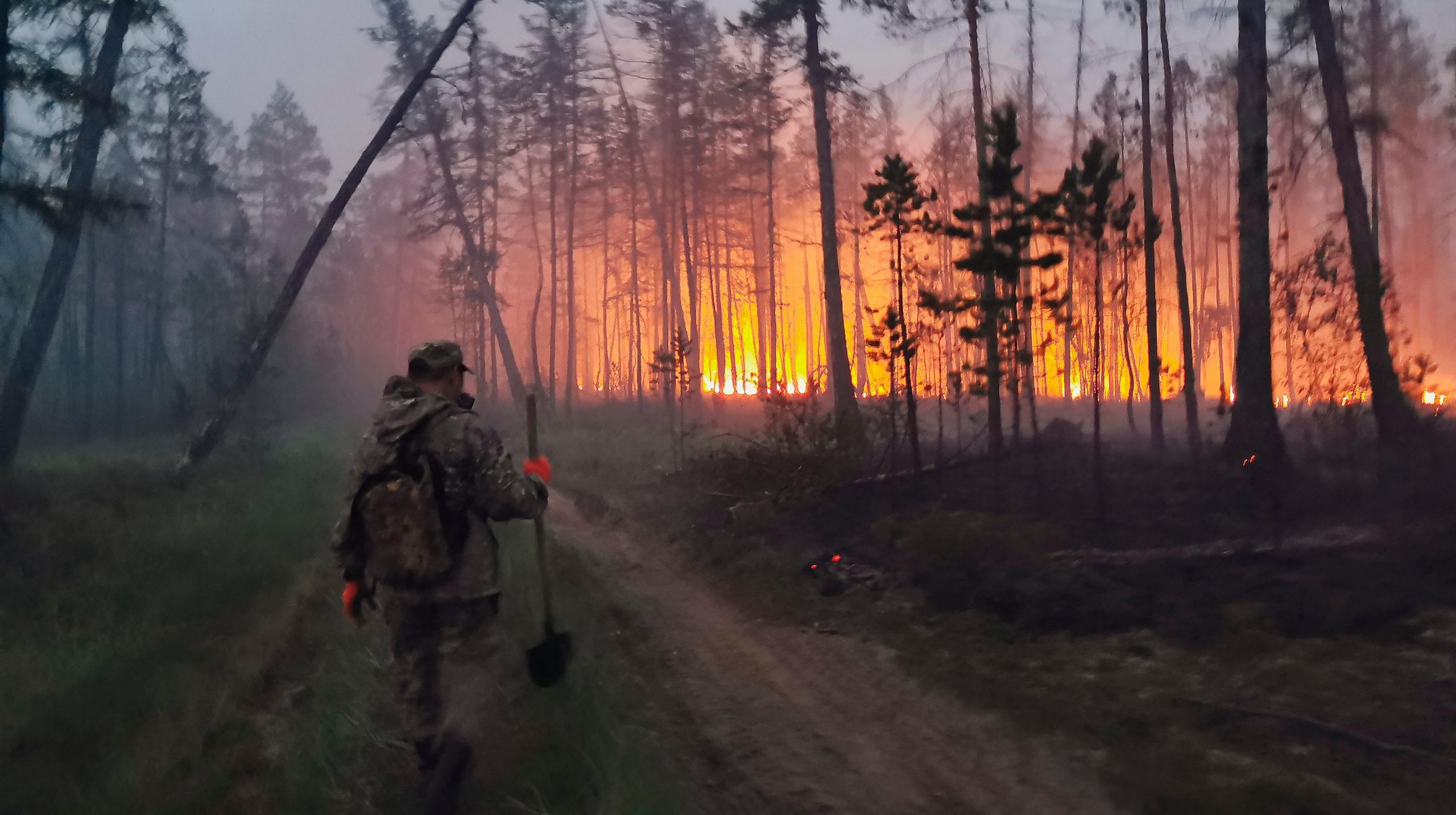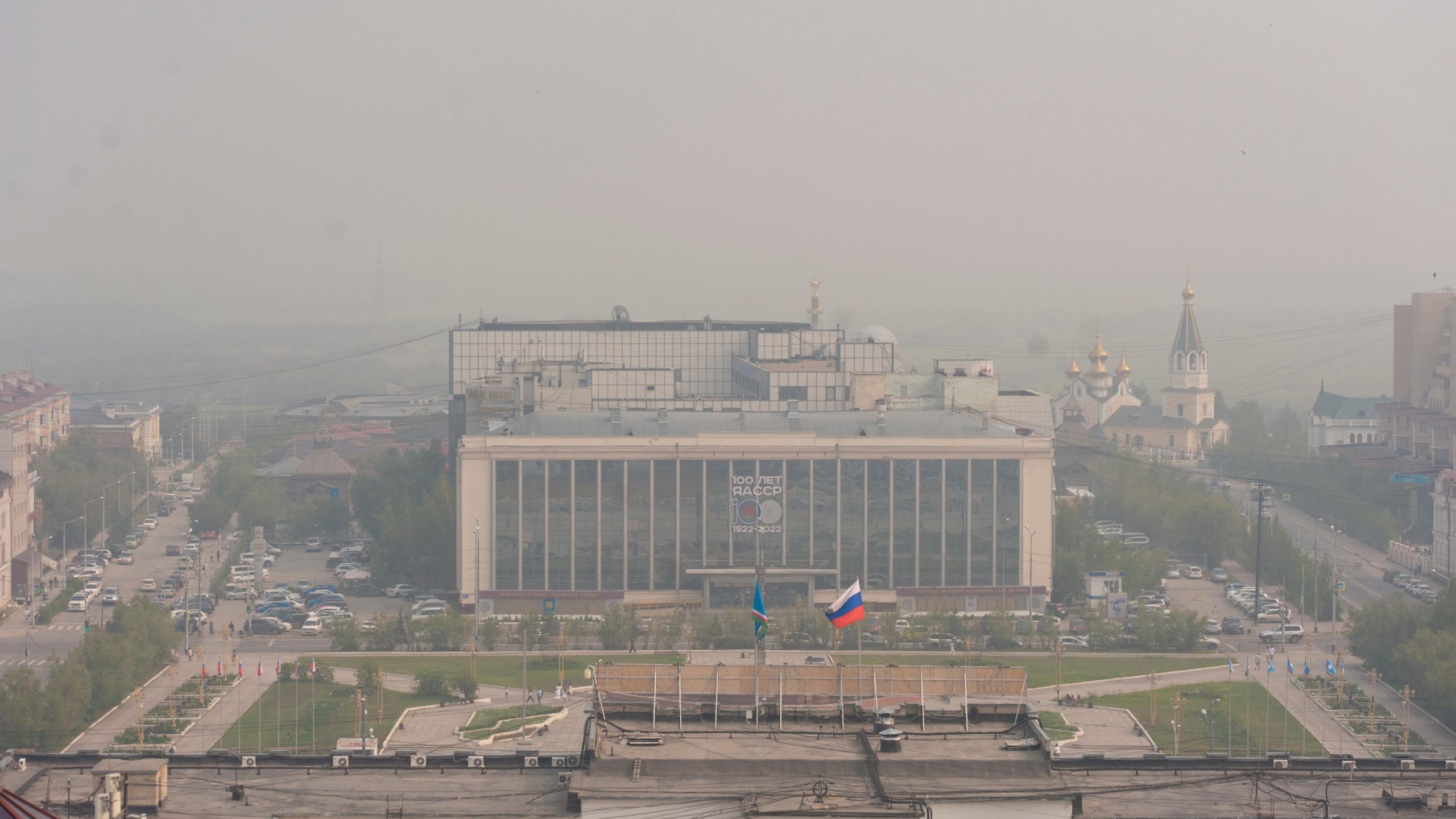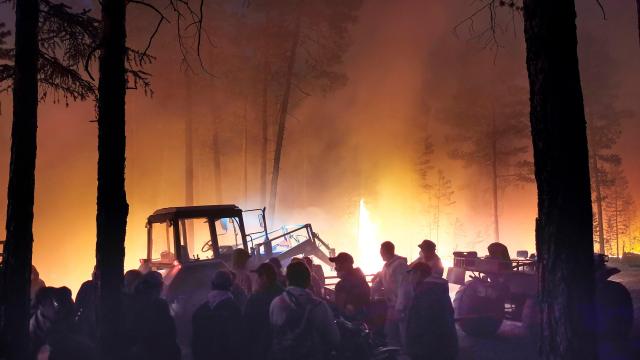Wildfires raging across usually-frozen land, temperatures topping 37.8 degrees Celsius, smoke blanketing cities — it’s close to apocalyptic right now in Siberia as one of the world’s most northern regions struggles through another intense fire season.
Flames first lit up the normally frigid landscape in May. Since then, things have gone from bad to worse. Officials said this is one of Siberia’s driest summers in 150 years, and record-hot temperatures over the past few years have dried out forests even further. More than 77,700 square kilometres have already burned this year. That’s half as much as the total 155,400 square kilometres that burned in all of last year’s fire season. The heat that drove last year’s season was made 600 times more likely by climate change.
Temperatures Incomprehensibly High

According to Russian officials, more than 2,270 firefighters are taking on 187 active wildfires in Siberia. Heat gripping the region has played a role in making them worse. In June of this year, European Space Agency satellites recorded a jaw-dropping ground temperature of 48 degrees Celsius in Yakutia, Eastern Siberia — hot enough to suggest that the area’s permafrost, which contains huge amounts of methane trapped in it, is in very serious trouble.
Areas above the Arctic Circle also saw freak heat in May and it continued into June. Last month, a large portion of central and northeastern Siberia averaged up to 6.7 degrees Celsius hotter than normal, according to data from NASA. That has helped give flames the fuel they need to burn the region over.
Smoke Clouds Coldest City on Earth

In the Yakutia region, smoke has choked at least 50 towns and villages, including the capital of Yakutsk. The city, which is known for having the coldest average temperatures of any city on Earth in the coldest region outside the Antarctic, had to temporarily shut down its airport this weekend due to low visibility from wildfire smoke.
“The fires have touched absolutely every single person’s life in Yakutia,” city resident Grigory Mochkin, who has been volunteering to set up fire breaks to protect the city, told the Guardian. “The fires are very large this year. And since the smoke has gotten to Yakutsk, people are very vocal on social networks because every person’s life has been affected. In past years, the smog has covered the city for at most a day.”
No Relief In Sight

The mayor of Yakutsuk told citizens to stay indoors over the weekend. Residents of the city of more than 280,000 told news outlets they were having trouble breathing and seeing, and their clothing and the air smelled of smoke.
“We can’t see each other because of the smoke, our eyes are burning and overall the smoke is very dangerous for the health of us villagers,” Vasiliy Krivoshapkin, who lives in the town of Magaras, told the AP. “We see on television planes that are dropping water on the burning forest but they aren’t sending these planes to help us for some reason. Why is there no help?”
“The Approach Of The End Of The World”

As the New York Times reported this weekend, locals in Yakutia are entering their third straight summer of having to pitch in to fight the fires that are ravaging their region. They are frustrated that there seems to be comparatively little help from the Russian government to stop fires from destroying the forest that many of them rely on for their livelihood.
“This is not a phase, this is not a cycle — this is the approach of the end of the world,” Semyon Solomonov, a resident of the village of Bulgunnyakhtakh, told the Times as he and his fellow villagers worked to put out a fire burning nearby. “Mankind will die out, and the era of the dinosaurs will come.”
Siberia’s Climate Transformation Goes Much Deeper

Siberia has faced a panoply of climate change-fuelled disasters in recent years. Many of them can be tied back to the extreme heat that’s gripped the region.
The Arctic is warming three times as fast as the rest of the world, and the impacts are growing more pronounced by the day. Siberia has seen multiple instances of exploding tundra. The huge holes that have blown out in the tundra are likely due to thawing permafrost and the buildup of methane. Thawing permafrost coupled with lax inspection procedures is also likely behind a huge diesel spill last year that reached a sensitive lake in the region.
There’s also an unholy feedback loop at play. Wildfires release carbon dioxide — including a record amount last year — while thawed permafrost releases methane. Both are greenhouse gases that can warm the planet further. So not only is climate change making life miserable for those in Siberia, it’s creating conditions that could make the problem worse.
